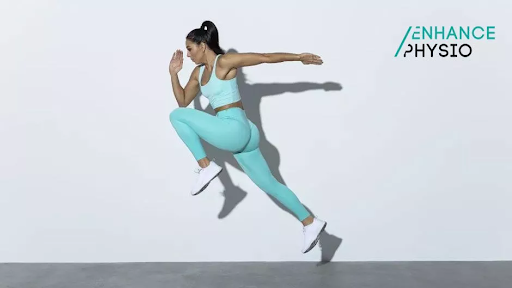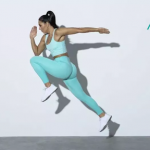Enhance Physiotherapy offers plyometric training programs
Enhance Physiotherapy Wodonga, 3690 is a team of skilled and professional physiotherapists who want to make you better. They provide a vast range of treatments to help you move and live better, no matter who you are. Their mission is to provide exceptional physiotherapy services that improve the quality of life of our patients. Enhance Physio believes in empowering their patients through education and treatment, so they can achieve their best life.
Plyometrics are an excellent way to increase power and speed. The key takeaway is that these exercises should be performed at max effort or close to it, which will allow you to achieve maximum force with your jump overcoming gravity.
If you are looking for a plyometric training program for injury prevention and rehabilitation or physiotherapy solutions for your headaches, Enhance Physio is here to help. Enhance Physio is servicing Lavington, Wodonga, and Albury.
Plyometrics Can Help You Get Back in Good Shape
While strength training primarily develops the nervous system and muscular adaptations to become stronger, plyometric exercises improve explosiveness which is the ability to generate maximum force in the shortest amount of time.
Plyometrics, which focuses on the “speed” component of power, is essential for most professional sports performance training.
Athletes often use plyometrics as part of their training, but anyone can do these workouts. After an accident or injury, people in physical rehab use plyometrics to get back into good shape and physical function.
What is plyometrics?
Plyometrics, or plyos for short, is a type of exercise training that builds muscle power by varying the speed and force of different movements. Plyometrics training can boost your physical performance and ability to perform various activities.
The 3 phases of plyometric exercise
The plyometric exercise involves 3 phases, rapid storage and release of energy via a quick stretch and shortening of the muscle and tendon.
- Eccentric phase – a rapid stretch of the muscle and tendon, where the muscles act to “stiffen” the lengthening tendon and store energy.
- Amortization phase – transition phase where the tendon becomes a loaded spring ready to recoil and produce force rapidly. The quicker this phase, the less ground contact time and more energy for power.
- Concentric phase – where the stored elastic energy is converted back to kinetic energy and powerful movement.
Examples of lower limb plyometric exercises include box jumps, a tuck jump, hopping, and skipping. In contrast, upper limb plyometrics can involve falling push-up catches, medicine ball throws, and clap push-ups.
What do plyometric exercises do?
Plyometric training has been shown to have several health and performance benefits, including:
- Improved bone mineral density
- Decreased risk of falls in elderly populations
- Improved tendon capacity and reduced risk of tendon injury
- Improved running speed and efficiency
- General reduced risk of injury
- Improved athletic performance
- Develops explosive power
How do we progress with plyometric training?
One method for progressing plyometric training is the “plyometric continuum” – a term and method produced by Lachlan Wilmot, a renowned Australian strength and conditioning coach.
This continuum follows a series of phases progressing from learning to absorbing force to produce force and combining these two qualities in the same exercise.
- Eccentric absorption – learning to absorb forces (e.g. tall to shorts, altitude landings)
- Concentric development – learning to produce force (e.g. squat jump)
- Jump integration – combining phases 1 & 2 (single hurdle jump, broad jump)
- Continuous jumps – repetitive jumping & landing (continuous hurdle jump, hurdle hop, pogo jumps)
- Shock method – highly aggressive jumping & landing (triple hops for distance)
The benefit of plyometric exercises for injury prevention
Athletes frequently use plyometrics to develop power for their chosen sport, and much has been documented about how to do so. Still, few people realize how vital plyometrics can be in injury prevention.
Plyometric exercises, in essence, force the muscle to contract quickly from a fully stretched position.
This is the position in which muscles are at their weakest. Conditioning the muscle at its weakest point (full stretch) better prepares it to deal with this type of stress in real life or in a game environment.
The benefits of plyometric exercises for injury rehabilitation
Most injury rehabilitation programs are unaware that an eccentric muscle contraction can be three times stronger than a concentric muscle contraction.
In the final rehabilitation stage, plyometric exercises are essential for conditioning the muscles to handle the added strain of eccentric contractions.
Neglecting this final phase of rehabilitation can frequently result in re-injury since the muscles have not been conditioned to deal with the added force of eccentric muscle contractions.
This is important to remember when engaging in activities such as running. Running, particularly high-speed running requires the repetitive absorption and production of high forces. As a result, while strength training undoubtedly improves performance and reduces the risk of injury, it makes sense to incorporate plyometric exercise into your gym or rehabilitation program.
Physiotherapy treatment and plyometric exercise
At Enhance Physiotherapy, we have specialized equipment to assess your athletic performance, such as the dorsaVi motion analysis system. This system evaluates your functional performance, such as squatting, jumping, landing, and running techniques. These tests also help determine when to start plyometric activities and what rehabilitation stage the patient is in.
Our physiotherapists and exercise physiologists are trained to provide targeted and skilled exercise and fitness programs. We are experts in prescribing the correct exercises to help you manage your chronic disease, recover from surgery or injury, or maintain a healthy lifestyle.
Final thoughts on plyometric exercise
A good plyometric training program will increase your speed and power, and improve coordination and agility while preventing injury.
Plyometric movements, or drills, are used to develop sport-specific power by mimicking movement patterns in the sport, allowing the athlete to run faster, hit harder, throw farther and react faster.
Book an appointment with one of our experienced physiotherapists at Enhance Physio to start your injury prevention or injury rehabilitation program!
Enhance Physiotherapy serves the community of Wodonga
Wodonga is a city that sits on the Victorian side of our border with New South Wales, 300 kilometers (190 mi) northeast of Melbourne. The population here fluctuates between 35000 and 40000 people depending on how many residents move into Albury NSW which forms an urban area together estimated at over 100 thousand!
If you live in Wodonga and are seeking Home Physio Wodonga, Enhance Physiotherapy is only a few kilometers away. Contact us now at 02 6060 2403 or make an online appointment.



































